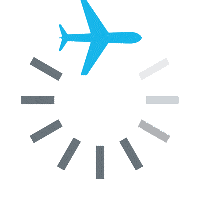Float Rating
In part 1 of our series on float flying, we looked at the basics maneuvers surrounding float rating training. The main topics were how to do a walk around on a float plane, how to evaluate the water conditions for flying, and some basic requirements. Let’s do a quick review:
Float Rating Requirements Canada
The transition from landplane to seaplanes is really quite simple and is designed to be done post private pilot license. The process takes a minimum of 7 hours of flight training which is usually 6 dual and 1 solo. You’ll also need to complete 5 take-offs and landings as the sole occupant. Float flying is a lot of fun!
How much does a float rating Cost Canada?
The average cost of a float rating is about $3,000 + tax in Canada. This is normally based on 6 hours dual and 1 hour solo rental in a float plane. It may seem a little expensive to get a float rating, but it is well worth it.

Let’s continue our topic of float rating material and get into some practical stuff.
Engine Start, Taxi and Run–Up – Float Rating
Many variables apply to the actions immediately preceding the actual starting of the engine. If a dock attendant is available, he/she can hold the aircraft pointed to open water until the engine has started.
If no helper is available and circumstances demand that the aircraft is suitably restrained until the engine has started, release can be made by releasing a rope which is threaded around a ring or cleat and the end held by the pilot until the engine has started.
If it is necessary to let the aircraft drift away from the dock, then surrounding obstructions such as other aircraft, boats etc. will dictate the procedure to be followed. This may be common during your float rating training depending on local procedures.
The pilot should at all times have a clear plan of what to do in case the engine does not start to minimize the likelihood of damaging the aircraft. If the aircraft is turned out by a helper in a fast flowing river, the aircraft should be turned to a 30 or 45 degree angle to the current and the engine started.
If for any reason the engine does not start the only way to get the aircraft back to the dock in a safe manner is to let the current move the nose of the aircraft down stream and at the same time move the tail of the aircraft up stream. This has to be done in a rapid manner as to minimize the down stream movement of the aircraft and the possibility of the aircraft colliding with another vessel or aircraft.
Engine run-up should not be attempted down-wind for the obvious reason of engine cooling and propeller spray pick-up, and can be done during the take-off run. Use the taxi time to inspect your take-off area while the engine is warming sufficiently for the run-up.
It is important that you maintain awareness and lookout of the area during run-up, since the plane will be moving and visibility will be impaired by the nose-high attitude. Check each item separately, then return your focus outside to assure that you are tracking straight and the area remains clear.
For most piston engines, the run-up is accomplished before completing the pre-takeoff checklist (unless done on the take-off run). Check to see that the engine is sufficiently warm (CHT/oil pressure/temp), apply full back pressure on the controls and select 1700 rpm. When stabilized, check each mag separately and return selector to both.
There should not be a drop of more than 150 rpm with a spread not more than 75 rpm between them. Cycle the prop 3 times (for first flight of the day) to circulate the oil, apply carb heat (check for an rpm drop or increase in carb air temp) and slowly reduce the throttle to full idle, assuring that the engine continues to run smoothly, then advance the throttle back to taxi speed (<=1000RPM).

Water Work – Float Rating
Taxiing during float rating pilot training comes in three modes, normal, sailing and on the step. The normal taxi mode is most often used; the control stick is kept all the way back to keep the propeller away from the bow waves and its spray. This is to ensure that water does not strike the rotating prop which can inflict severe damage to the propeller.
Downwind taxiing aggravates the water spray pick-up because the wind will push the aircraft to a much faster speed as when taxiing into the wind. Therefore, when taxiing downwind, make sure the speed of the aircraft is kept as slow as possible. Great care must be taken when turning especially at high speeds and in a strong wind.
The aircraft has the tendency to turn into the wind (weather-cock) when taxied across wind or downwind when control forces are relaxed. Centrifugal forces tend to roll the aircraft to the outside of the turn and the wind will always aggravate the rolling tendency. The combined forces could be enough to overturn the aircraft. Therefore, all turns into the wind should be with utmost care and slow speed.
a. Step Taxiing
Step taxiing requires considerable skill and experience. It was one of the hardest things to do in my float rating training. To begin, the water rudders should be in the up position. The aircraft is placed on the step by holding the elevator control fully back and applying full power.
The nose will rise and the aircraft accelerates. When the nose stops rising, ease the control column forward to put the nose of the aircraft to a place just above the horizon and the aircraft accelerates further.
Reduce power at this point to prevent the aircraft from becoming airborne. Turns on the step are made with the application of rudder and to counter the centrifugal force, the ailerons are turned with the turn as to keep the outside wing up and prevent aggravating the centrifugal tendencies of the aircraft.
Turns of more than 30 degrees require a high level of skill and experience. Step taxiing is not to be attempted during the solo portion of the training.

b. Plow (Nose High) Taxiing
This mode of taxiing is only used for assisting turns to downwind and for engine run-up. For the run-up, hold the control column fully back and apply the power setting recommended by your Pilot Operating Handbook for engine run-up.
Typically this is done during the take-off slide. When engine run-up checks are complete, take-off power is applied and the take-off is continued. Taxiing in the nose high mode should be of short duration as the engine can quickly over heat.

c. Sailing
Sailing is the procedure used for moving the aircraft in a location where normal maneuvers are not possible because of crowding, room, wind or other conditions. Sailing is done with the help of wind, engine or paddle power or a combination of these. This may be commonly done during your float rating pilot training as you move away from a busy flight school.
In a light wind with the engine stopped, the floatplane moves backward in the direction of the wind. In a stronger wind with the engine idling, the aircraft moves backwards or toward the side in which the nose is pointed. The nose of the aircraft can be moved by course application of rudder and by using full application of aileron.
The upwards movement of the aileron is less than the downward one, hence more exposed surface of the downward aileron and therefore, more sensitive to being effected by the wind.
When sailing use the air rudder and aileron drag to steer the aircraft. To sail straight backward, centralize all controls. Additional “sail” area may be acquired by lowering flaps or opening cabin doors.
Forces of current or tidal action will offset the effect of wind to a varying degree and should not be underestimated. If the engine has been left running in the idle mode, its forward thrust can be reduced further by running on one magneto or applying carburetor heat.
Do not operate the engine in this manner for too long as plug fouling can result.
Water rudders work in reverse in comparison to the air rudders, so the water rudders should normally be pulled up for sailing.
Questions? We can help for a Float Rating too!
Canadian Flight Trainers has a team of professional flight instructors, commercial pilots, and airline pilots on staff to answer all your questions. We may not always do float rating training in our every day lives, but some of us have a bit of experience with it all. We ensure you are not alone in this process of learning and have your back in all aspects of pilot training.
Discover more from Canadian Flight Trainers
Subscribe to get the latest posts sent to your email.


